Following our rather unsuccessful fishing experience in Newquay, we headed off towards Tintagel and Bude. We needed to end up in Ilfracombe on Friday, 19th of September, from where we would depart to Lundy Island the following day.
We arrived at Tintagel on Monday, 15th September, settled in at a campsite at the top of the cliff with stunning views over Tintagel castle. As we had a couple of hours to spare before dinner, we went for a walk around the village.
The first time we visited Tintagel, more than ten years ago, we fell in love with it. This cute little village has much more to offer than just the King’s Arthur legend. Simply by walking along the coastal path, you will be delighted by the scenic views over its nearest cliffs, the wildness of the Atlantic sea, and the extensive and rocky beaches which, when exposed at low tide, they reveal a wide range of seashore life.
The bed and breakfast we stayed in ten years ago was one of the cheapest and, therefore, basic that we have ever found in the UK: £15 per night with full English breakfast included. The B&B still exists and it appears to have had an upgrade, since TV has been added to all rooms! I expect there are still no en-suites though.
We went for a quick stroll down to the beach with the aim of picking up some mussels for dinner that night.
We arrived when the tide was just receding which is the best time for spotting and harvesting seashore life before the sea returns. We managed to pick up enough for a starter. Surprisingly, although the mussels were quite small, they were very tasty; we just wondered whether this particular species of mussels were just small or whether people just harvest them before they get really big.
Common limpets are also edible and Gary, well known for his adventurous experience with food, was quite keen on trying one. We had no idea how to cook it, except for a vague recollection of a Ray Mears episode. We tried to simply fry them with a bit of butter. This sounded good and easy enough, however the look of them once don e was particularly revolting. Their colour turn out from light brown to black and they appeared to be even slimier than when they were alive. Their horns were up and, suspicious that they may still be alive, we decided not to give it a try. We felt really sorry for these fellows, sacrificed for no reason.
With its rocky beaches and clear waters, Tintagel is one of the best places of the coast of Cornwall to do some snorkelling. So on Tuesday, we drove to Trebarwith Strand, a village with a long and sandy beach, only five kilometres away from Tintagel; an ideal place to launch our kayaks. The weather forecast was set to be warm and sunny, so we also took the snorkelling kit with us in case we found a nice rocky little bay where we could stop our kayaks and explore a bit of the sea life.
The tide was at its highest point. This doesn’t represent a problem in getting into the water unless the sea is really choppy and the current strong, which they both were. The waves crashed onto the rocks so furiously that they could have sent us back to the rocks in one hit. A dozen people were sitting there, contemplating the scene, waiting for the tide to go out. With a bit of guidance from the lifeguard, we walked the rocks to the next bay where the sea was a bit calmer. Although still awkward, we could launch our kayaks safely. Once we had paddled a few metres away from the rocky shore, the sea was calm and rested. At that point, we relaxed.
The variety of water conditions is what I most like about our kayaking experience in the UK so far: at Lulworth, the sea was nice and calm, although it felt a bit crowded with lots of surfers; Newquay, calm and brief, no current but, as it was quite late in the day, we had the chance to enjoy the start of the sunset, it was beautiful; Navax point, very challenging and, because of that, the one we will always remember; and the River Valley, very calm, you can hardly call those rapids, rapids and, in my opinion, it was the most boring kayaking experience.
Because of the high tide, Tintagel beach where we planned to stop for lunch was covered and it was too dangerous to land, so we had to paddle for another hour until we found a little bay at Bossiney bay where we could pull up our kayaks. As it was still quite warm, we decided to do a bit of snorkelling before we had lunch. Although the reported water temperature was just two degrees less than the air temperature, it felt like it was minus ten. As we took all the trouble to put our snorkelling kit on, we still got into the water. Even after ten minutes snorkelling we were still hyperventilating because of the cold. The rough waves had also kicked up all the sand so we couldn’t see anything anyway. It didn’t really work but we had tried though.
The tide was going out on the way back. The sea was calmed, the current was in our favour, the wind was behind us. So we sat there and relaxed, paddling effortless, leaving the natural wind to take us gradually back. However, as we approached to the shore the waves were particularly high, powerful and strong. “Fantastic”, we exclaimed, ironically. “It will be a messy landing in front of dozens of people who were sunbathing and swimming in the surf at the time. Despite Gary’s detailed instructions on how to land safely, I seemed to ignore his advice. I did okay in getting out of the kayak just after the first wave, but I forgot to watch out for the second wave. This pushed me under the water and made me spin around a couple of times. Gary was close enough to grab the kayak so that the sea didn’t drag it in but he couldn’t grab me. Of course, I was okay but I was incredibly angry and embarrassed especially since lots of children around seemed to be handling the waves better than me. Gary was impressed that my Raybans had remained on my head, so I still looked cool!
After that little adventure we headed off to the campsite to give the kayaks a good clean and pack them up for a while, very sad. All our kayaking experiences have been absolutely amazing. Next time we used them is likely to be in France.
On Wednesday, 17th we drove northward only 5km and stopped at Boscastle. The village is infamous in the UK for a devastating flood that occurred in 2004. We took a stroll up the cliff to stretch our legs and enjoy another stunning views of the Cornish coast which we are now becoming addicted to.
A few photos of Boscastle:
On the way back, we stopped in the information centre where Gary bought a couple of books about birds and wild animals and I bought a book about seashore in the UK and Europe, which I am planning to take every time we go for a coastal walk so I can identify which creatures I can see; I am hoping I could tick off most of them by the end of our travel next year.
After another hour drive, we stopped at Bude. We had the famous Cornish pasty for lunch, although neither of us was particularly traditional; I had spinach and ricotta and Gary had lamb with mint.
We followed this with cream tea in Dora in the afternoon.
We stopped at Ivyleaf Green campsite, five kilometres north of Bude. Gary had promised to cook seafood risotto with fresh mussels from the sea and, as we only had an hour and a half before sunset, we hurried down to the beach to pick some up. Miss timing the walk, it was getting quite dusky by the time we got to the shore and we had to get a taxi back. Those mussels ended up quite expensive! Unfortunately, the mussels were even smaller than those we picked up at Tintagel; they still tasted good though.
| Date | Location | Distance | Time | Ascent | Descent |
| 18/09/2014 | Ivyleaf | 8 km | 2 hrs | 125 m | 250 m |
On Thursday, 18th September we headed off towards Ilfracombe, our final destination before departing to Lundy Island. On the way, we stopped at Clovelly village, a small, picturesque touristic village where no cars are allowed and the only way of transportation are donkeys.
After visiting the village we went for a walk along the cliffs. The trees are just starting to drop and are showing us the early colours of autumn, my favourite season of the year.
| Date | Location | Distance | Time | Ascent | Descent |
| 18/09/2014 | Clovelly | 10 km | 2.5 hrs | 620 m | 620 m |
We ended the walk at 18.30 by visiting Clovelly gardens where I took lovely photos of some of the flowers and posted these on Pinterest. If you like flowers, please take a look at the board named August – September 2014.
We are finishing our posts about Lundy Island and will post them in the next couple of days.
SM & GDR

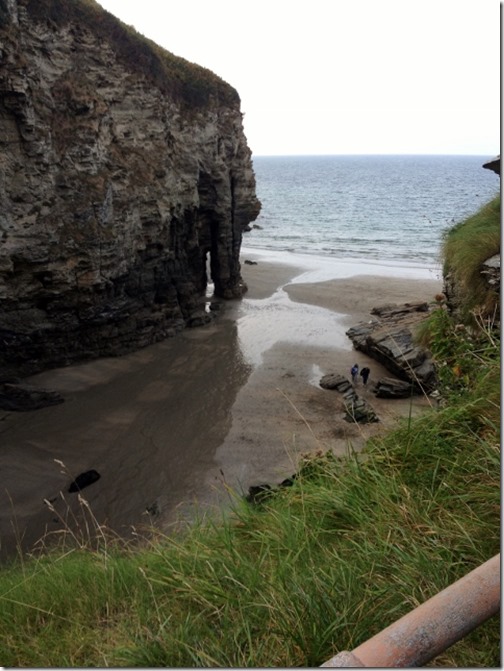
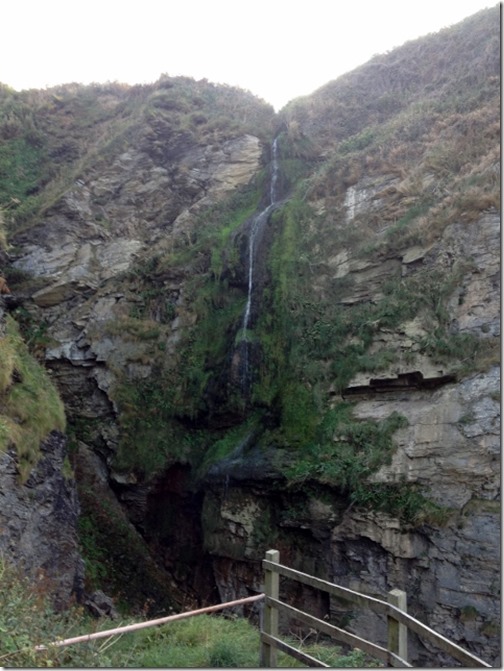
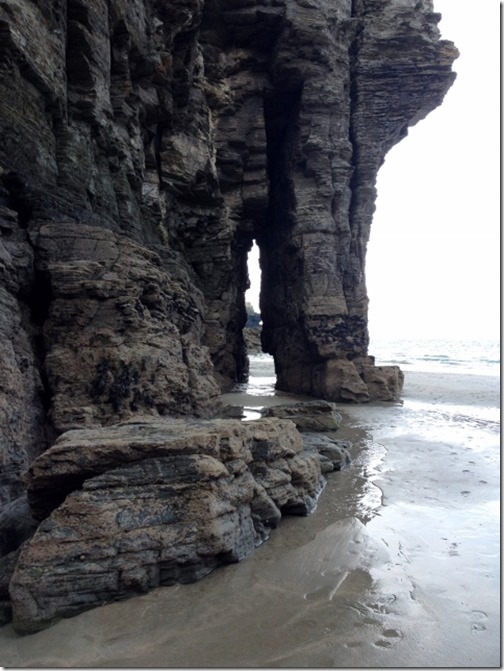
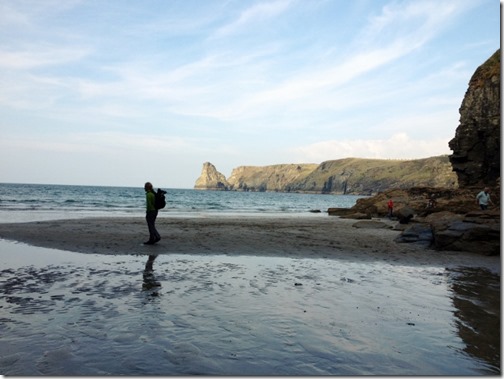
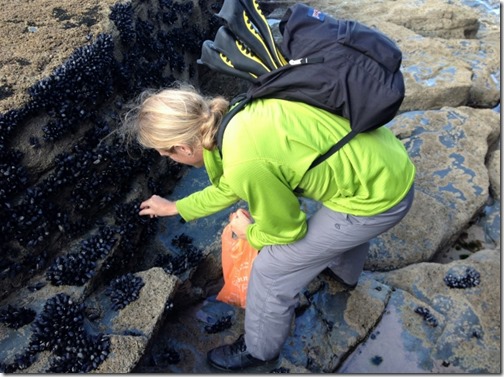
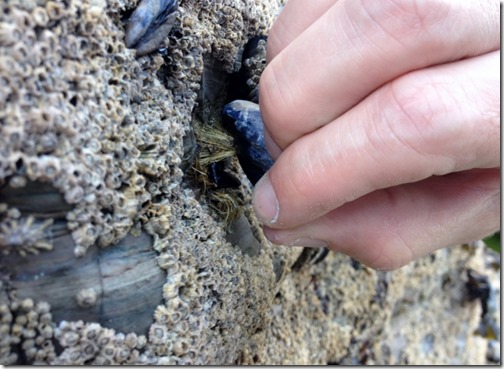
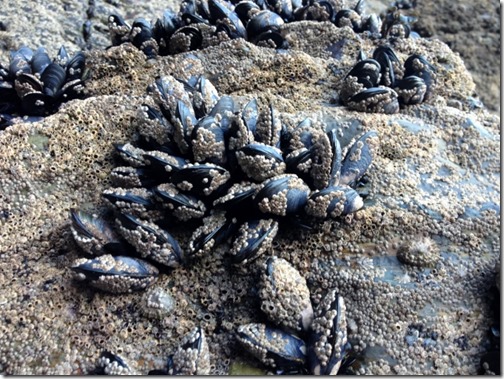
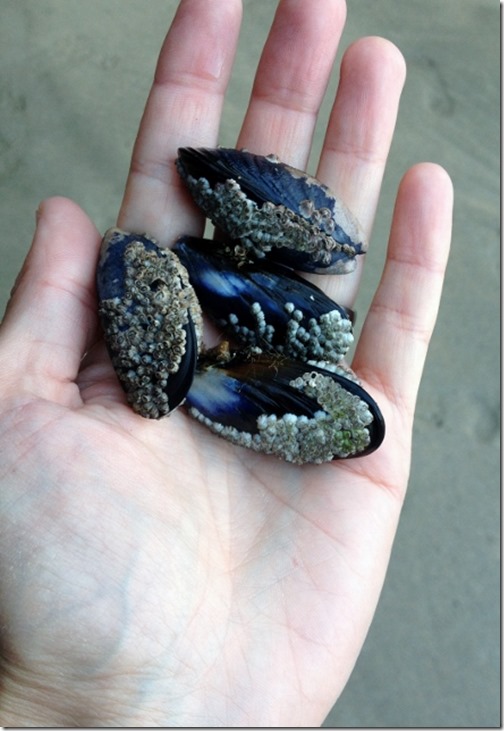
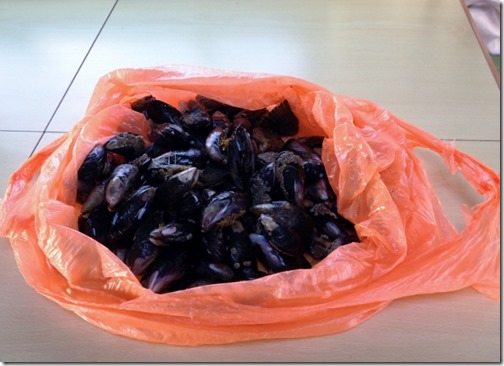
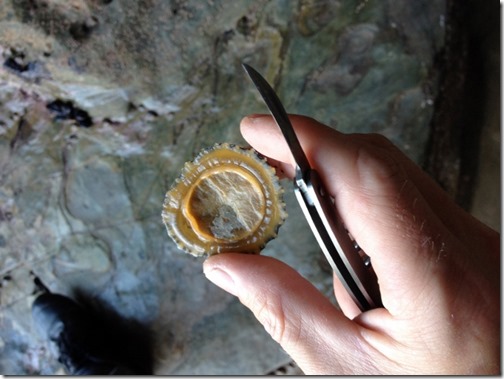
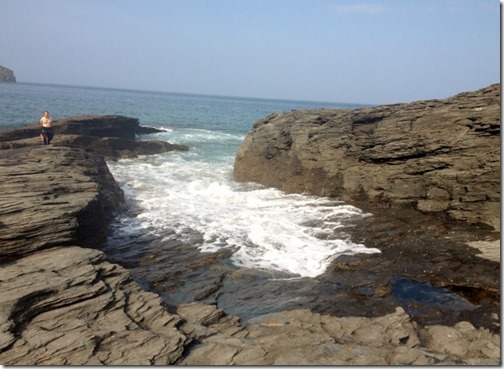
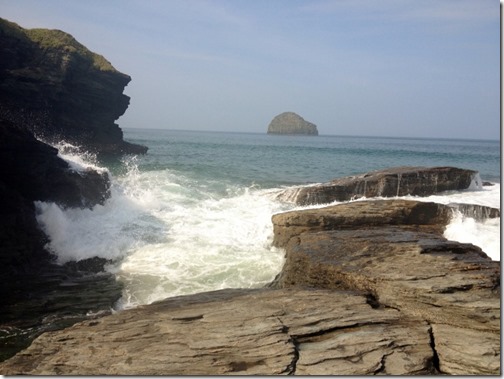
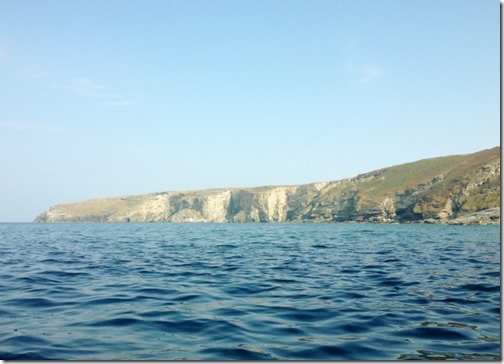
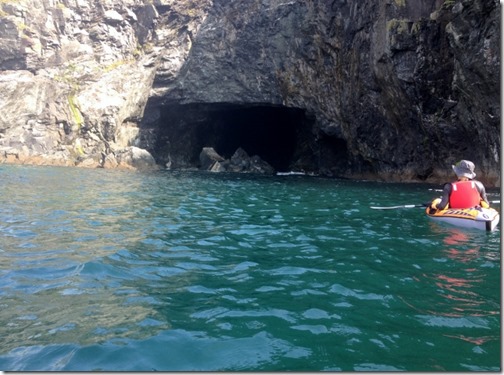
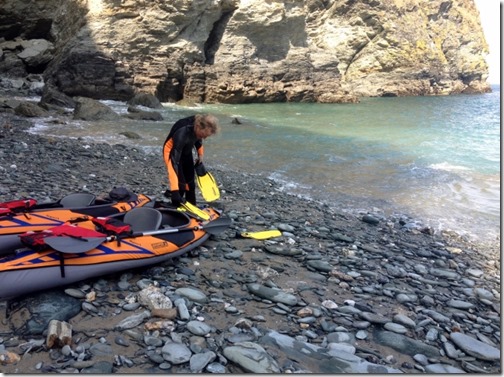
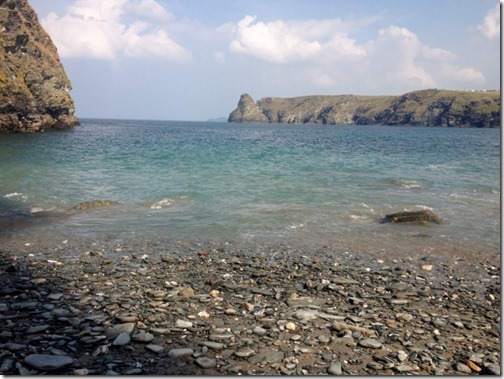
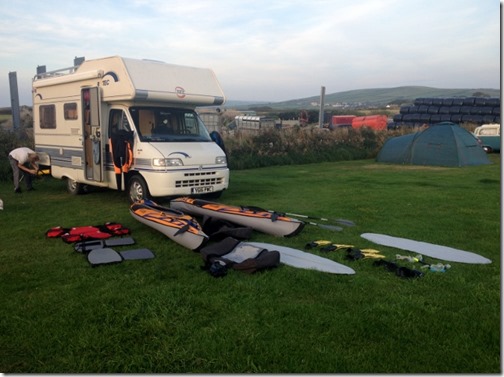
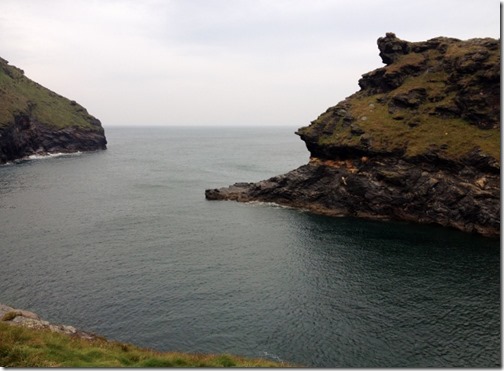
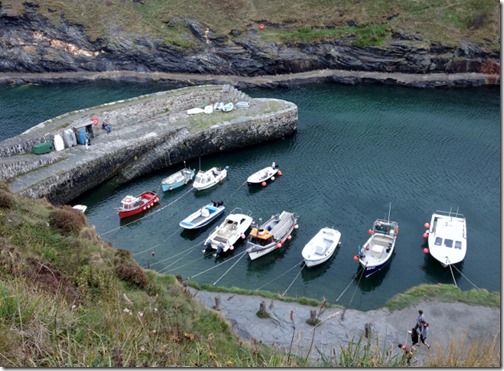
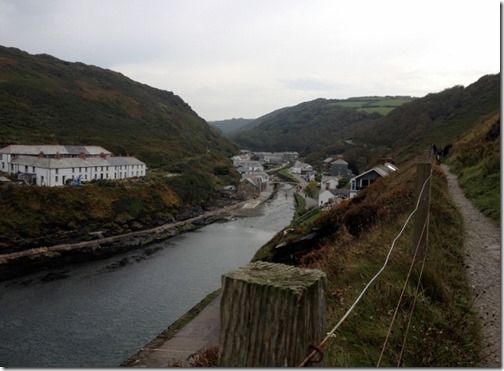
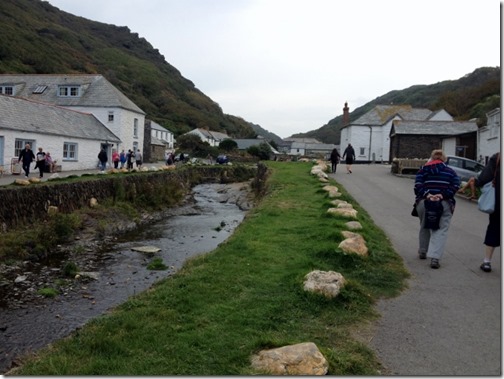
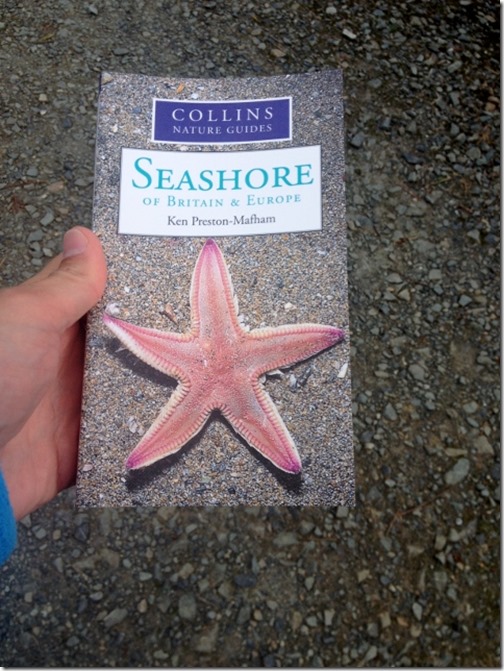
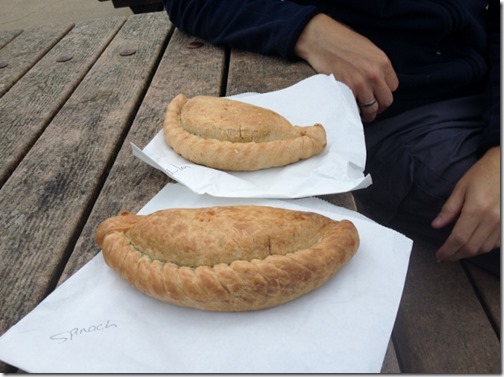
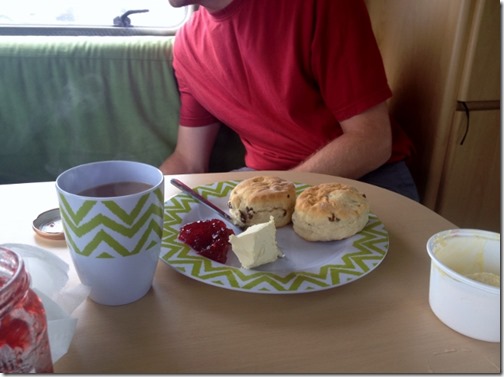
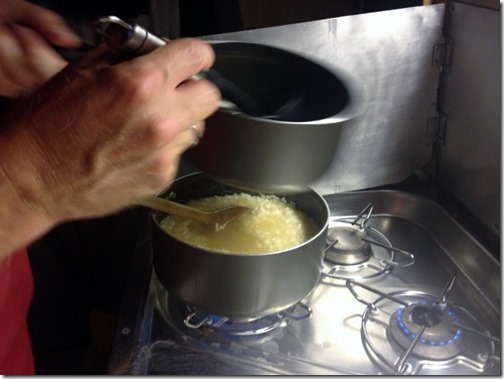
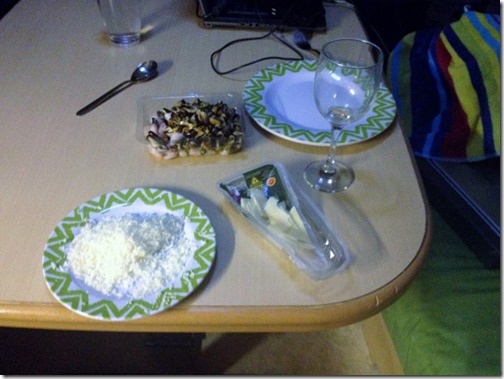
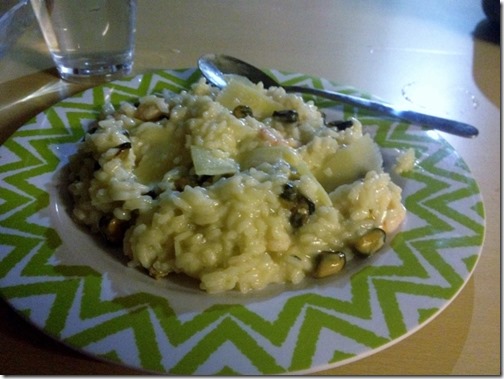
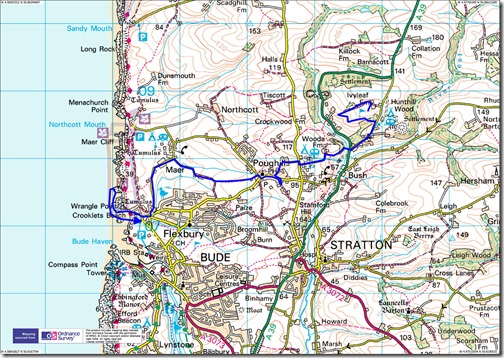
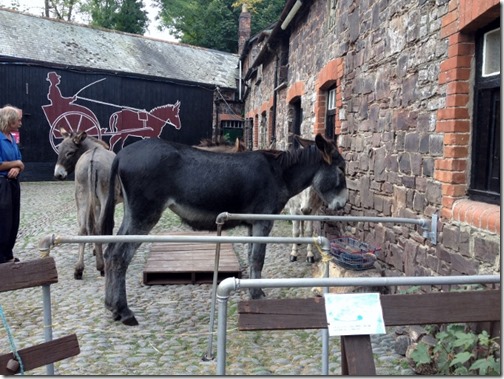
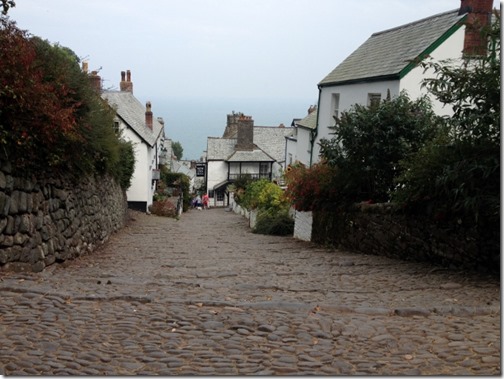
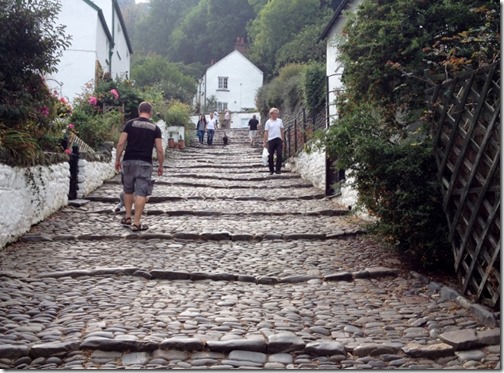
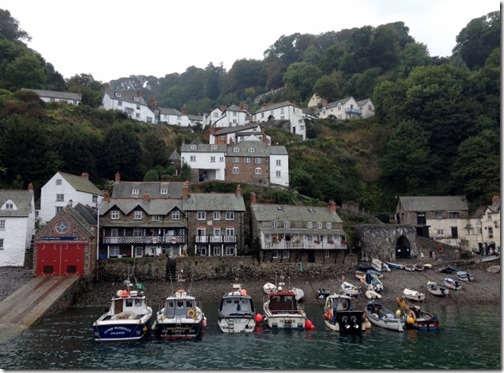
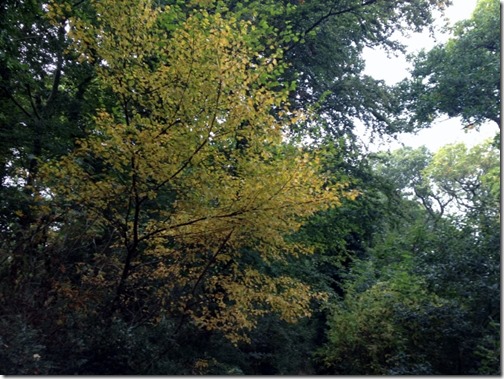
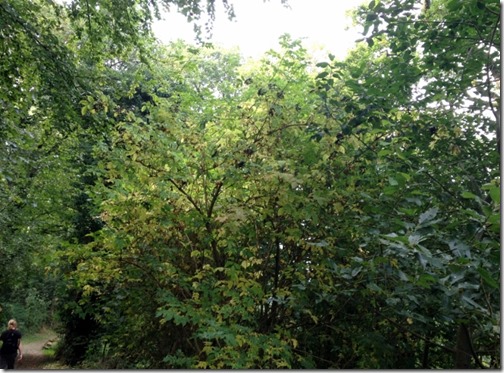
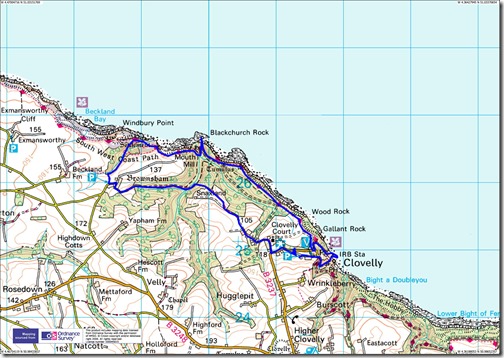






There would be a picture on pinterest about your little incident with the waves, what a pity!!
it must have been hilarious 🙂 but don´t worry about it, nobody knew you there anywere.
We were too busy fighting the waves to take photos, shama as the seals were very close!
Mmm, ese risotto tiene muy buena pinta… Sobre todo despues de un dia de esos de andar, bucear, etc… Qué envidia!
Ya te digo chato. Estaba buenisimo, con mejillones recien pescados. Seguimos en contacto sobre la ruta de los vinos en Francia. Besos
El pueblo de Clovelly, una maravilla, por cierto montasteis en burro?
Por favor haz caso a Gary creo que tiene mas experiencia , tu ya la tendrás cuando termine la aventura.
Los mejillones pequeños son mas sabrosos , en Valencia los llaman “Clochínas” , . en Galicia los cogen pequeños los meten en “bateras” son como grajas para criarlos
El risotto de Gary tiene una pinta buenisima……. Ummmmmm. rico rico…..
Las fotos siguen siendo expectaculares y llamativas. Y la verdad teneis un punto de visión perfectos y salen muy buenas fotos……… seguir haciendolas……Gracias.
Muchas gracias por tus comentarios sobre la comida. Gary dice que no lo he hecho caso en los ultimos diez años y no cree que vaya a cambiar ahora. Es mejor cocinero que yo
Beautiful pictures!
It sounds like you are having lots of fun.
Sara will be particularly interested in the pictures of Tintagel – harvesting mussels. she will probably request to join you next time you go there (she loves mussels).
Isabel xxx
Excellent! Next time we will count on her. She may even be able to come with Dora before we sell it